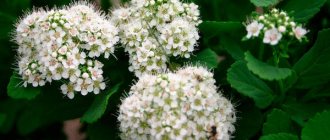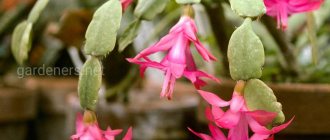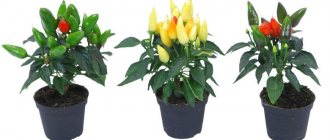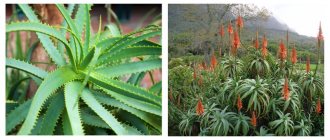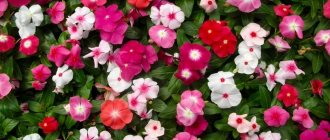Almonds low
Low almond, steppe almond, dwarf almond - all these are names of the same plant - a low, slow-growing deciduous shrub that belongs to the Rosaceae family.
It is very decorative, and not only during flowering. In addition, the shrub has medicinal properties, produces a bountiful harvest and is easy to care for. Steppe almonds winter safely without shelter even in Siberia.
The plant blooms in April for several weeks. Numerous soft pink flowers with a diameter of 2-3 cm bloom on the branches simultaneously with green lanceolate leaves. They have oval petals 10-17 mm long.
Forsythia, or forsythia
Sunny forsythia can be found in many cities; this bright shrub adorns city parks and areas near residential buildings. Yellow bell-like flowers appear in April even before the leaves bloom. And if you cut forsythia branches in February and put them in water at home, then after 2 weeks you will get a miniature golden beauty in a vase.
- Forsythia
A sunny shrub that is one of the first to “wakes up”.
- Forsythia: all about planting, care and propagation
In winter, spring and summer - it is always a different color! We talk about how to properly care for forsythia.
Spiraea spring blooming
Spiraea oakleaf
In spring, spireas oakleaf, Arguta, gray, alpine, crenate, three-lobed, Thunberga, etc. bloom. Numerous white flowers appear on last year's shoots in May. Flowering lasts about a month. However, shrubs look most impressive in spring only if they grow in a sunny area. In the shade the flowers become smaller.
- Spiraea is a real decoration of the site
Types of spirea are divided into spring-flowering and summer-flowering. Which ones are better to choose?
Rhododendron
Rhododendrons belong to the Ericaceae family. These small trees and shrubs are found throughout the world, but are especially popular in China and Japan. Rhododendron flowers are collected in multi-flowered inflorescences of various colors: pink, purple, red, orange, yellow, white. They bloom in May, and at this time it is impossible to take your eyes off the rhododendron.
In the middle zone, the most winter-hardy and unpretentious rhododendrons are grown: Katevbinsky, Daurian, Vazeya, golden, Caucasian, pointed, Japanese. Only their heat-loving varieties need shelter, and species plants tolerate even harsh winters well.
- Winter-hardy rhododendrons - 10 most beautiful varieties with photos and descriptions
Frost-resistant rhododendrons for open ground.
- Rhododendron katevbinsky
One of the most beautiful flowering shrubs that overwinters with green leaves.
low growing trees
Fruit trees and shrubs for the garden, columnar fruit trees
Sometimes the boundary between a tree and a bush is blurred, but with skillful formation of the crown, a tree (trunk) can be obtained from a bush. Among the decorative and fruit forms there are many that can delight you with exquisite flowering, followed by fruits. You can choose a suitable small bush option to decorate the driveway near the house and for a free corner in the garden.
Interesting! Most crops are excellent for forming hedges.
Japonica
A bush up to 3 m high can be formed into a tree. Its branches in the spring are covered with abundant white, red or orange rather large flowers, from which small, but quite edible fruits will ripen by autumn. The plant is valued for its decorativeness, fertility and unpretentiousness.
Japanese quince flowering
Tamarisk (comber)
Quite a numerous species, in which there are trees and shrubs with an average height of 3-5 m, but there are also dwarfs. The fragrant honey plant is distinguished by its very high vitality; it is not afraid of severe frosts and prolonged drought. Flowers are formed on one-year-old shoots and can be colored pink, lilac, or purple.
Tamarisk blossom
Forsythia
A low tree or small shrub, forsythia belongs to the Olive family. In the spring, before the leaves emerge, the branches are covered with numerous bright yellow, four-lobed, bell-shaped flowers.
Flowering occurs exceptionally early, as soon as the snow melts. Following their withering, new shoots appear, on which buds will appear next spring. The plant, which is very undemanding to care, tolerates any formative pruning without pain.
Blooming forsythia bush
Advantages of low trees for gardening
The choice in favor of low-growing crops is quite justified on a personal plot. Any plant becomes most decorative with regular and proper care. It is necessary to carry out pruning, pest control, and harvesting every season. Anyone can do this work at a height of up to 3 m; you don’t have to hire workers; all you need is an ordinary stepladder.
In large areas where there are tall trees, there is always free space that can be filled with ornamental crops. For example, it is quite possible to plant roses, lilacs, barberries, or any other shrubs or low-growing trees near tall apple or pear trees.
Important! Low-growing plants not only serve a decorative purpose, but also provide protection from draft winds.
Barberry Thunberg
This deciduous shrub with branching shoots is primarily famous for its bright red berries, which decorate the plant from mid-summer to late winter. But the reddish-yellow flowers are no less spectacular. They bloom at the end of May and bloom for 10-12 days.
Barberry Thunberg also has decorative small leaves. In species plants they are bright green (scarlet in autumn), and in varietal specimens they can be yellow (Aurea), brown (Bagatelle), purple with edging (Golden Ring), variegated (Rose Glow), etc.
- Barberry Thunberg
A charming shrub with bright red berries and variegated foliage.
Shrubs with red leaves
The most popular barberry varieties with purple leaves
Ottawa barberry Superba (Superba) is a tall spherical shrub from 2 m in diameter with a red-violet summer color. Charming during the flowering period, when clusters of delicate yellow-red flowers form on each branch.
Barberry thunberg Atropurpurea (Atropurpurea) is a spreading shrub with a dense crown that grows up to 2 m in height and the same in diameter. It has small leaves of a purple-red hue. During the autumn season they take on a bright red color. In spring it blooms with light flowers, collected in inflorescences of five pieces.
Shade-tolerant elderberry with dark red crown
Black elderberry Black Beauty is a shrub with an enviable growth force reaching 3 m in height and has a dense spreading crown. The dark purple foliage is oblong with obvious serrations and an elongated tip. In June, charming corymbose inflorescences consisting of small pale pink flowers appear against the background of a dark crown. Closer to autumn, small black berries ripen, suitable for consumption.
Black elderberry Black Lace is a round, spreading shrub reaching a height of about 2.5 m. It has heavily dissected foliage of a dark beet color (the intensity of color depends on the quality of light). With the onset of summer, the tips of the shoots are decorated with delicate inflorescences of pink flowers, fading to white during flowering. By the end of the season, delicious dark berries ripen.
Charming blooming weigela with reddish-brown leaf
Weigela flowering Alexandra (Alexandra) is a flowering shrub that grows up to only 2 meters in height, and with age it grows in diameter, acquiring a rounded shape. The leaves are burgundy when they bloom, then turn green with a bronze tint. A distinctive feature of weigela is its repeated flowering. In June and August, the bush is abundantly covered with bright, crimson or pink flowers, which have a pleasant aroma.
Weigela flowering Minor Black is a compact shrub up to 60 cm in height and the same in width. The matte leaves are a noble burgundy color; when exposed to sunlight, they become dark and can turn brownish-green. The flowers are dark pink up to 2.5 cm in diameter.
Red-leaved, fast-growing bladderworts
Lady in Red (Lady in Red) is a shrub up to 1.5 m in height. When blooming, the leaves are red, and by autumn they darken to chestnut-burgundy. Blooms densely with delicate contrasting white inflorescences
Diabolo (Diablo) is a spherical bush with red leaves up to 3 m in height. The flexible branches first grow upward and then bend their tips towards the ground. The crown is purple-red with a green tint. Blooms with corymbose crimson inflorescences. The fruits are in the form of purple-red swollen leaflets.
Fascinating scumpia and mysterious hazel
Mackerel tannery Royal Purple (Royal Purple). This picturesque shrub grows up to 1.5 meters in height and diameter. The slender shoots are densely leafy, which gives the plant a lush, rounded crown. The leaves are purple-burgundy. At the beginning of summer, the bush is densely covered with numerous compact pink flowers, collected in openwork inflorescences. And by the end of summer, long red threads appear on the flower stalks, giving the crown an airy, cloud-like shape.
Common hazel Purpurea (Purpurea) - the shrub reaches a height of 5 meters, the crown is widely spreading, the shoots grow vertically. At the end of April, hazel blooms and small purple catkins appear surrounded by foliage. And the leaves are a sight to behold! They are large and have a deep wine color. There are several decorative curves resembling waves across the entire area of the leaves. It bears fruit with nuts known as hazelnuts.
Magnolia
Deciduous forms of magnolia bloom in April-May, and the flowers bloom before the leaves appear. The most popular spring-flowering magnolias are holly, naked, star, Kobus, Soulange, Loebner. It is noteworthy that in mid-summer these shrubs can bloom again.
Magnolia flowers are pink or white and very fragrant. Depending on the type, they can be small or large (up to 20 cm in diameter).
- Magnolia hybrida George Henry Kern
Spring-blooming shrub with delicate fragrant flowers
- Magnolia Kobus
A cold-resistant magnolia whose spring blooms are simply mesmerizing.
- Magnolia star
The shortest plant of the Magnolia genus, on which numerous stars “light up” in early spring.
- 7 popular types of magnolia for your garden
Magnolias that will not leave you indifferent.
Perennials with red leaves
Unpretentious heucheras with red foliage
Heuchera hybrid Cajun Fire is a miniature perennial with red leaves up to 25 cm tall and spherical in shape. The leaves are large, deep red, and darken during the season, becoming dark purple. Pink-white flowers bloom on long stalks above a mass of red leaves.
Heuchera hybrid Rio (Rio) is a herbaceous plant up to 30 cm high with a voluminous spreading crown. The leaves delight with their amber-red hue. It blooms with snow-white small inflorescences that bloom in spring on long vertical stalks. The plant feels great in partial shade, so it can be planted in the tree trunk zone of large trees.
Red leaf cereals: imperata and millet
Imperata Red baron (Red Baron) grows up to 45 cm in height. Has vertically growing foliage. When young they are bright green with a red tint at the tips. Then they turn completely red. It blooms in late summer with fluffy silvery spikelets.
Switchgrass Rehbraun (Rehbraun) is a herbaceous plant growing up to 2 m in height. The dense bush is strewn with flat linear foliage of an unusual red-brown color. In August, many panicle inflorescences appear creating an airy effect. Retains a decorative appearance for a very long time.
Popular sedums with purple fleshy leaves
Hybrid sedum Cherry Tart (Cherry Tart) is a compact perennial growing up to 20 cm in height and 45 cm in width with a flower size of up to 5 cm. The round, fleshy leaves stand out with their deep cherry hue. It blooms with small yellow flowers.
Sedum telephium Purple Emperor is a perennial plant growing up to 70cm in height. Dark purple vertical shoots are decorated with large dark red, almost burgundy, foliage. Blooms profusely with luxurious pink flowers collected in lush round inflorescences.
We have not provided a list of all plants with red foliage. You can always explore the catalog of our online store and choose alternative options. Don’t be afraid to show your imagination, experiment, and you will definitely end up with an amazingly beautiful and attractive landscape outside your window.
Tree peony
Large spherical buds (15-25 cm in diameter) appear on the bush in the second half of May and do not fade for about two weeks. Double or semi-double flowers can be white, soft lilac, pink, crimson or lilac with a dark crimson spot at the base.
In ornamental gardening, the most common hybrids are subshrub peony. They have long feathery leaves and white, pink, lilac or red flowers with a diameter of 25 cm.
- Everything you need to know about peonies in one article
We have collected all the most useful tips on planting, growing and propagating peonies. Enjoy reading!
- 9 fantastically beautiful varieties of tree peony
Magnificent peonies that will take your breath away!
- Tree peonies - planting and care
Don't know how to plant and grow a tree peony? We'll tell you!
Camellia
Camellia is one of the most beautiful indoor plants. Three hundred years ago, camellia was an invariable decoration of high society salons, although it always required special growing conditions and care.
Choose mature plants with woody shoots in the store, carefully study the information about its habits and characteristics. The temperature in the room for camellias in winter is usually too high; this plant loves not only coolness (temperature no higher than 15 degrees), but also fairly high air humidity. If such conditions are not provided, the camellia will shed its buds and even leaves and begin to hurt.
Camellia will not tolerate not only competition with other plants, but also improper decorative presentation. It is not recommended to combine camellia with other plants, even with decorative foliage: it should stand either alone or in the company of camellias with a different color. A group of camellias should not be too large: a combination of two or three plants is considered ideal.
Camellias are watered only with soft water and often, but not abundantly; they do not like abundant moisture as well as drought.
Photo: cdn.st100sp.com
Decorative apple tree
This tree is grown not for its harvest, but to decorate the garden. White, pink or purple flowers appear on the plant in May, and in autumn and winter the tree is covered with small red apples. The leaves are no less attractive: in many specimens they are burgundy or purple.
In landscape design, decorative apple trees of the Royalty, Helena, Everest, Royal Beauty, Rudolf varieties, as well as the Niedzvetsky apple tree are most often used.
- Decorative Niedzwiecki apple tree
A tree that, when in bloom, fills the garden with an intoxicating aroma.
Flowering trees for garden decoration
Considering that the main decoration of a personal plot is still annual and perennial flowers, ornamental trees are selected for them so that their flowering periods fill the “pauses” that occur in spring and summer.
The modern range of garden crops allows you to choose any shade to suit your taste.
Beautiful flowering trees for the garden
When choosing a suitable tree or bush, you need to decide on your goals. For some, a plant with beautiful flowers is enough, but for others, healthy and tasty fruits are important. When choosing an ornamental crop, you should pay attention to its winter hardiness. Not everyone can winter without shelter at subzero temperatures.
A considerable number of tree varieties are distinguished by long-lasting flowering, but ultimately do not produce any fruits useful to humans. They are traditionally planted behind the fence of a personal plot, decorating the access area. This category includes: sakura, chestnut, linden, elderberry, bird cherry, etc.
Cherry blossoms
Fruit trees can bloom quite modestly, but more often than not, the appearance of the harvest is preceded by a massive blooming of beautiful and fragrant buds. The flowering time of pears, apple trees, cherries, plums, cherry plums, quinces, almonds, peaches, and apricots is a real holiday for bees and gardeners.
Trees with pink flowers
Names of some species that show beautiful blooms in all shades of pink:
- Almond - it can be tall, medium-sized and dwarf, with an average height of 4 to 6 m. It produces delicious sweet or bitter fruits, but its flowers are also very beautiful. Each flower reaches 2.5 cm in diameter and has 5-7 pink or almost white petals. Almonds prefer to bloom in May, when there are no leaves on the branches.
- Rhododendron is a numerous species, which in Russia is represented by wild evergreen or deciduous specimens, growing not only in the Caucasus, but also in Siberia and the Far East. Quite large corollas bear 5 petals of pink or purple-violet shades, collected in brushes or large corymbose inflorescences.
- Magnolia is a southern tree that requires wintering at positive temperatures. Its large fragrant pink flowers bear 6-12 petals, collected in 2-4 circles. The size of the flowers is so large that pollinators are not only bees, but also bumblebees and large beetles.
- Peach - this fruit tree is traditionally grown in the south, but nurseries offer modern varieties with increased winter hardiness: Frost, White Swan, August Stable, Harbinger. Sessile single pink flowers bloom ahead of the leaves and exude a delicate, sweet aroma, reminiscent of cherry, and invariably causing children's delight.
Almond blossom branch
Trees with red flowers
Red color is less common among flowering trees, but it can also be found if desired. For example:
- Apple Tree – The most common shade of flowers for this tree is soft pink or white. But among the newest varieties you can also find representatives with red flowers: Royalty, Rudolf, Nedvetsky. You can choose the option with large or small fruits. The trees in bloom look simply fabulous.
- Pomegranate is valued for its tasty and healthy fruits; its flowers serve as decoration for the garden. Among the popular varieties are tall and dwarf, fruit and ornamental varieties. The pomegranate flower can be pink, scarlet or purple in color. Up to 97% of the buds formed during the season are infertile, and only 3% will bear fruit. In this case, the flowering period lasts up to 6 months. The wintering temperature minimum is up to -17 °C.
Pomegranate flowers
Trees with white flowers
It is believed that the white shade of petals on deciduous trees is the most common. Indeed, many fruit and ornamental species bloom this way. For example:
- Acacia - its various species can bloom with yellow and white flowers, and in central Russia the most common varieties are those with snow-white inflorescences. The bell-shaped calyx of the flower consists of fused petals, inside of which there is a lot of nectar, which lures bees to the area. A sweet floral aroma, spreading for many kilometers around, accompanies the acacia season. A good variety should be selected carefully, because instead of the expected 3-4 m, you may well end up with a real giant.
- Bird cherry is a favorite ornamental garden and street plant, park plant, which every spring is covered with a fragrant blanket of snow-white boiled flowers, collected in brushes or corymbose inflorescences. At this time the tree is beautiful, like a dream. The fruits of new cultivated varieties are eaten and have healing properties.
- Viburnum is a cold-resistant, beautifully flowering fruit plant. Its lush white inflorescences produce red, black or yellow edible berries in late autumn. When choosing a variety for your site, it is worth clarifying its characteristics. The selection of this crop was carried out in two directions and produced varieties of two types: with medium-sized flowers and large juicy berries for the table, or with sterile large flowers that do not bear fruit.
Branch of blossoming bird cherry
Rose hip
This bush is also known to both old and young. Wild roses bloom on the bush at the end of May and emit a pleasant aroma. The plant is unpretentious and does not require watering, but for lush flowering it needs a sufficient amount of light.
- Rose hip
A popular plant with fragrant flowers and medicinal fruits.
This article features mainly plants that bloom in May. But this does not mean that in April most trees and shrubs are still “sleeping”. We just decided not to repeat ourselves, since we have already written about “early birds” before. If you missed these materials, take a look at the articles:
- 10 ornamental shrubs and trees that bloom in early spring.
- Top 16 primroses among shrubs and trees.

